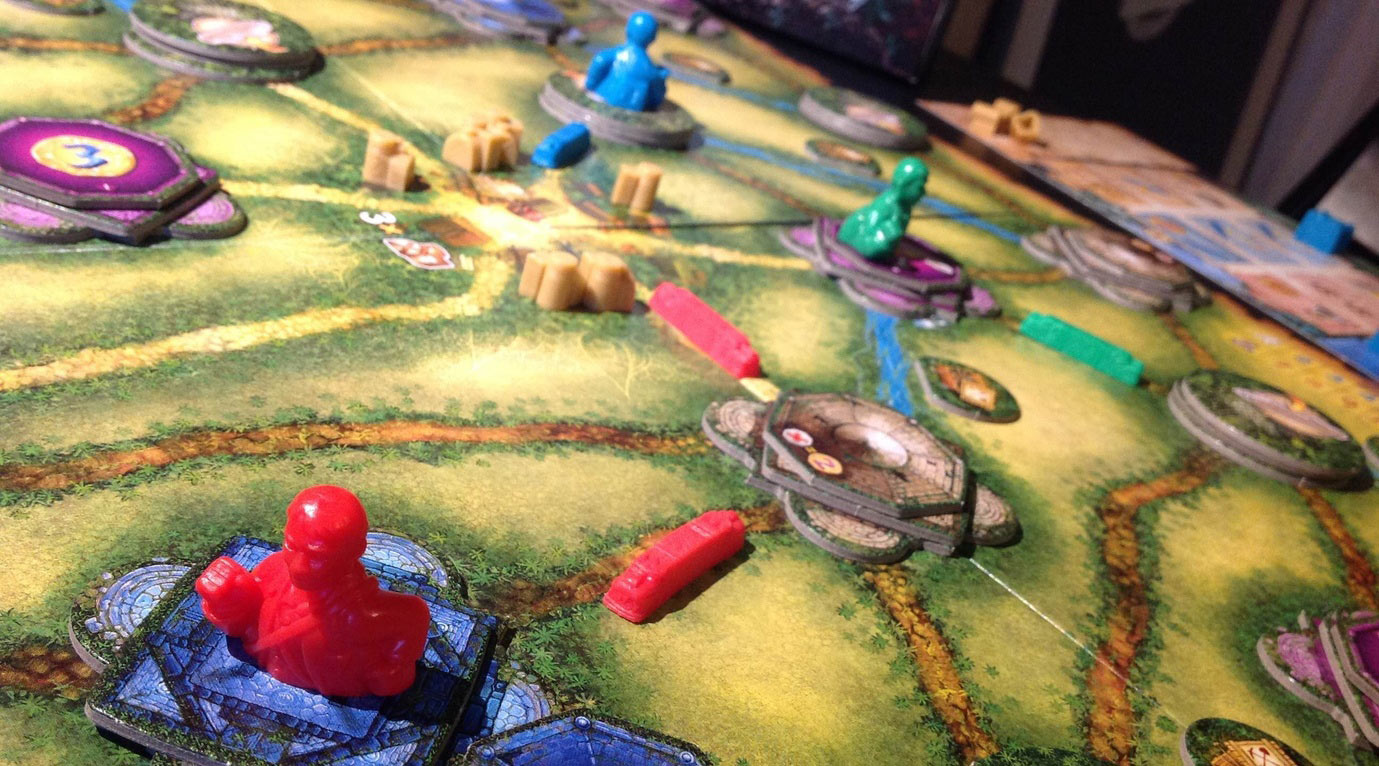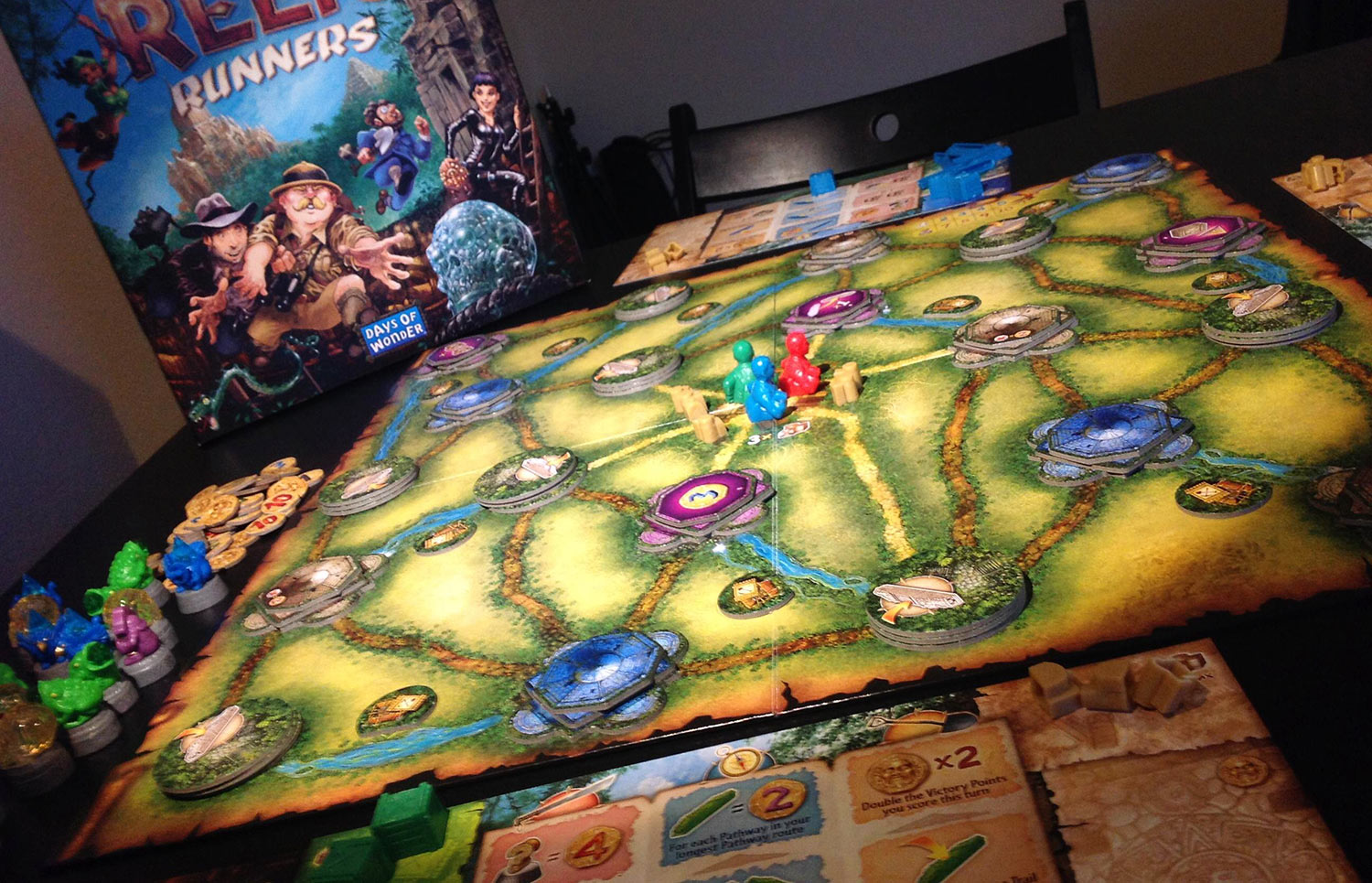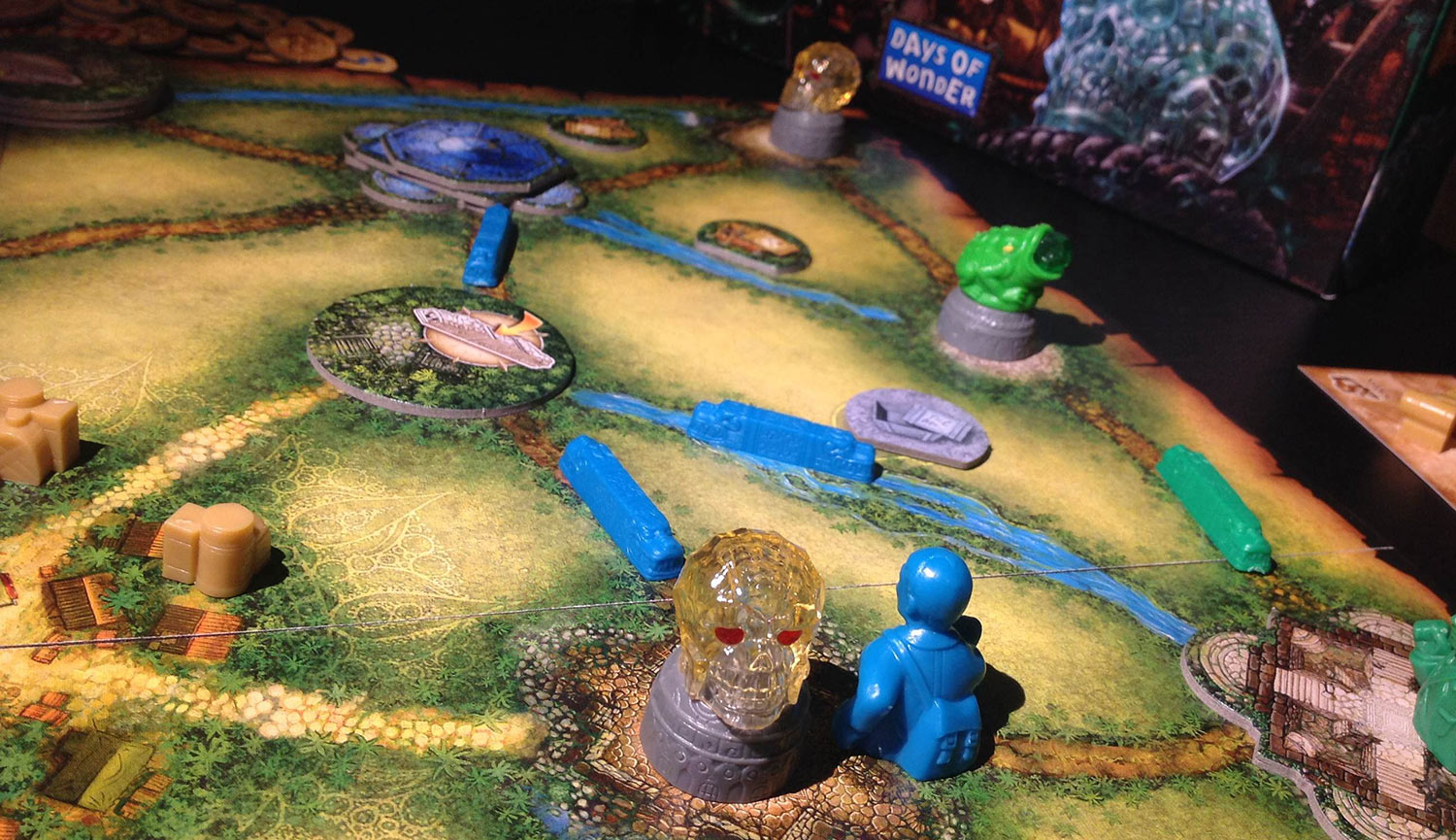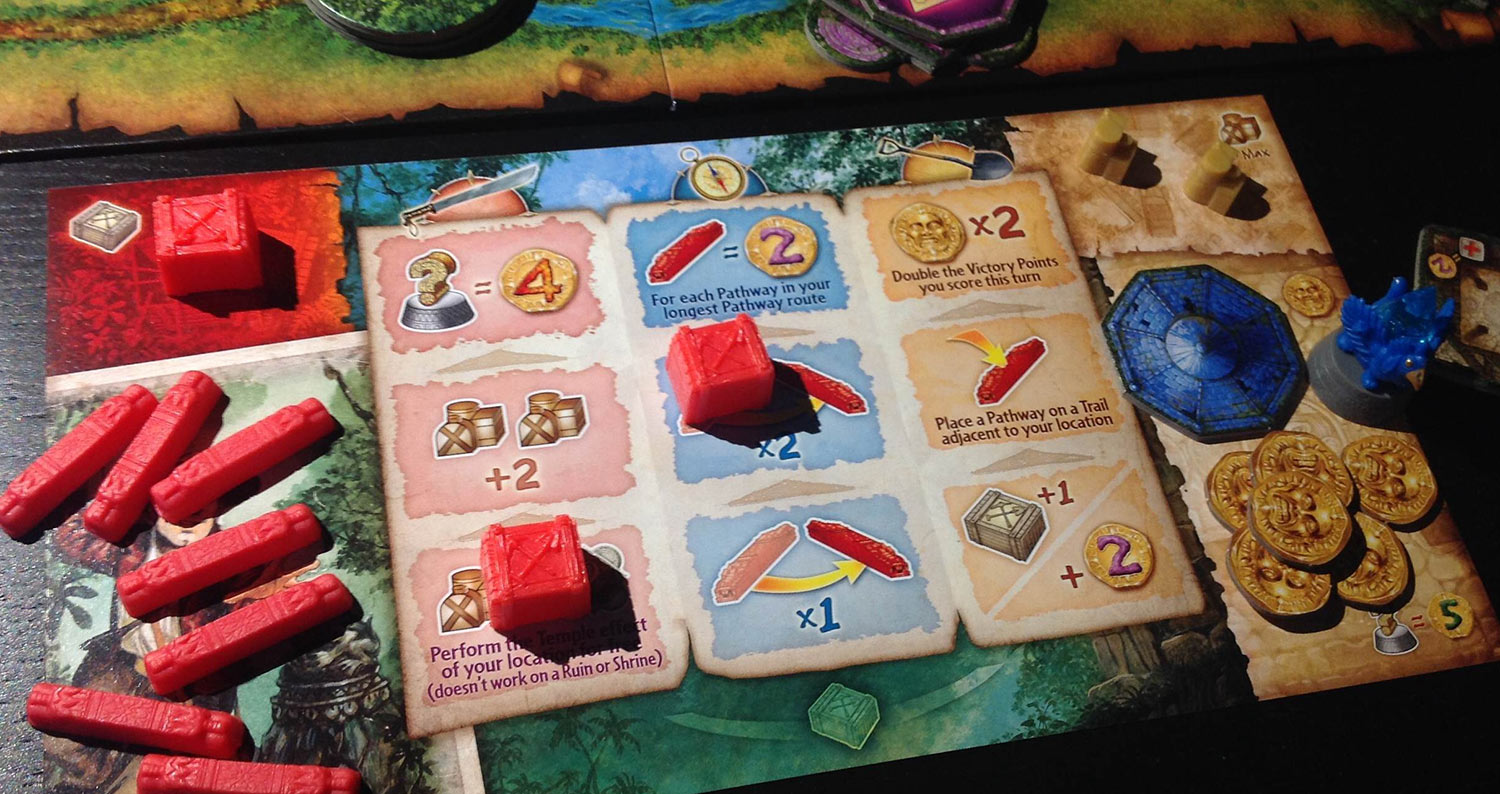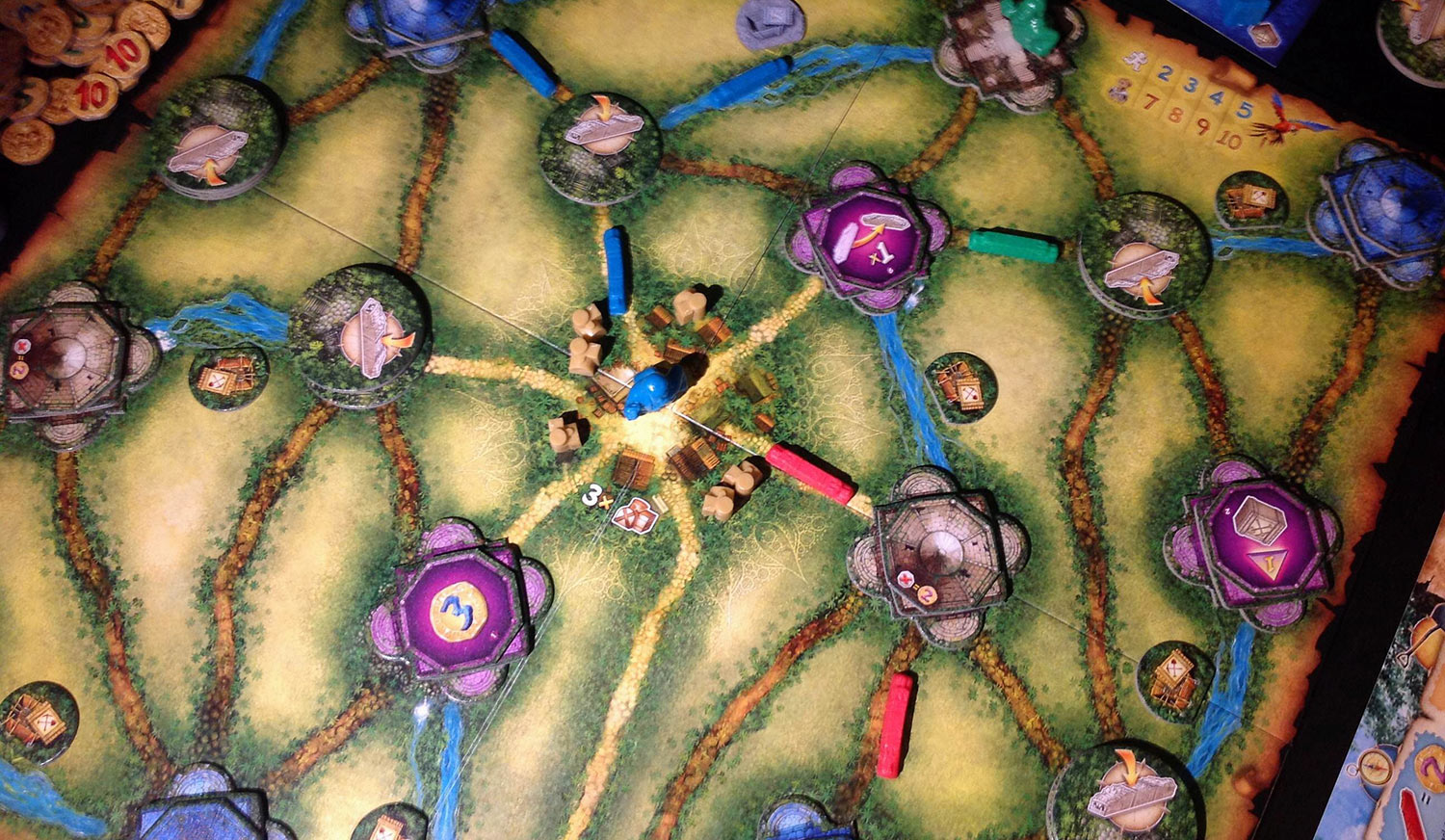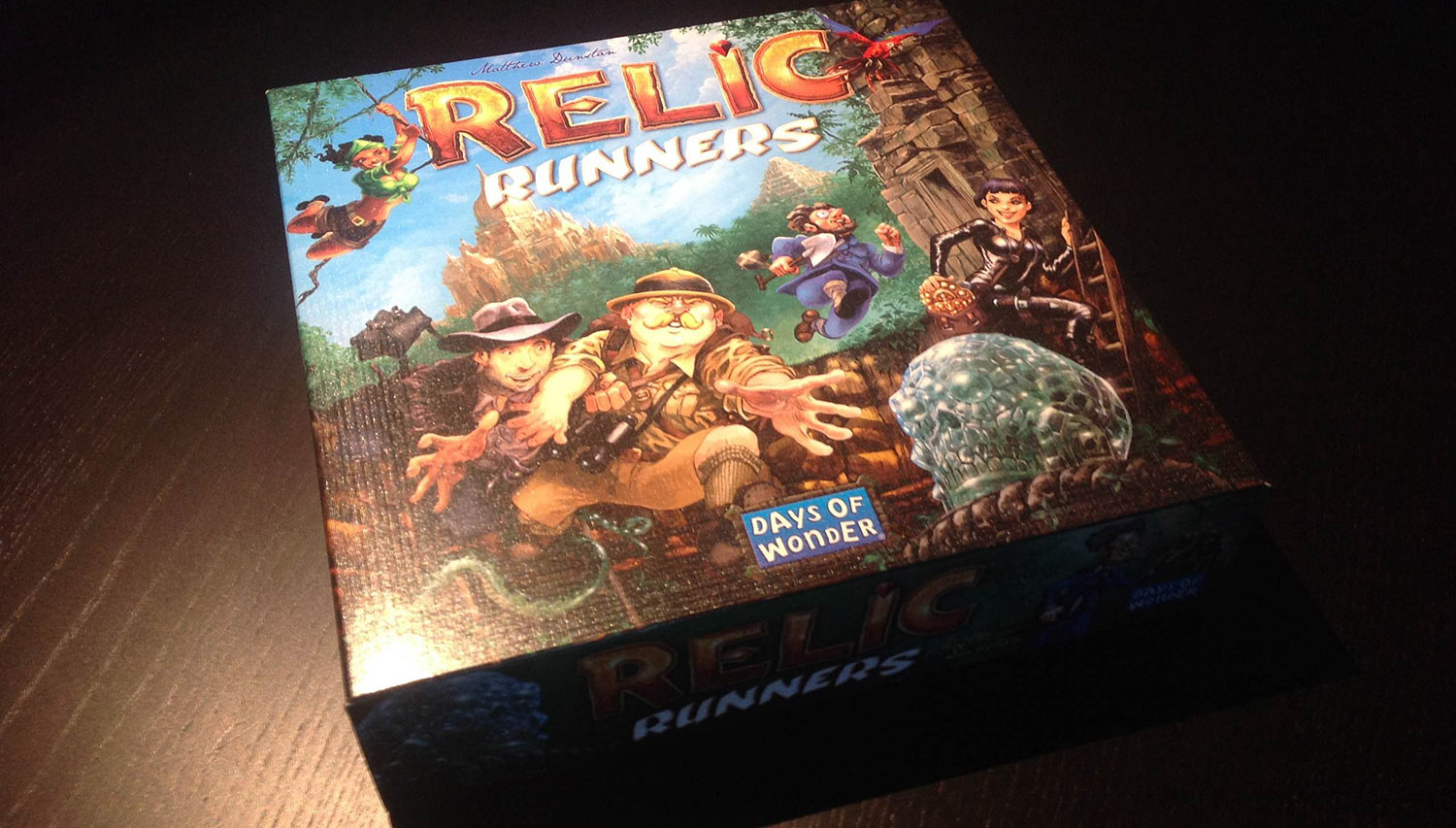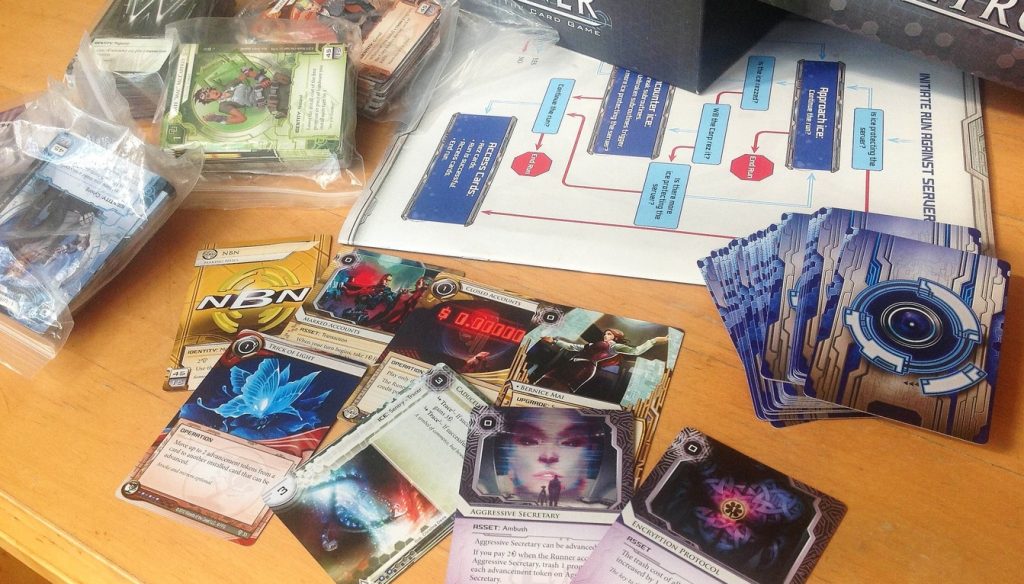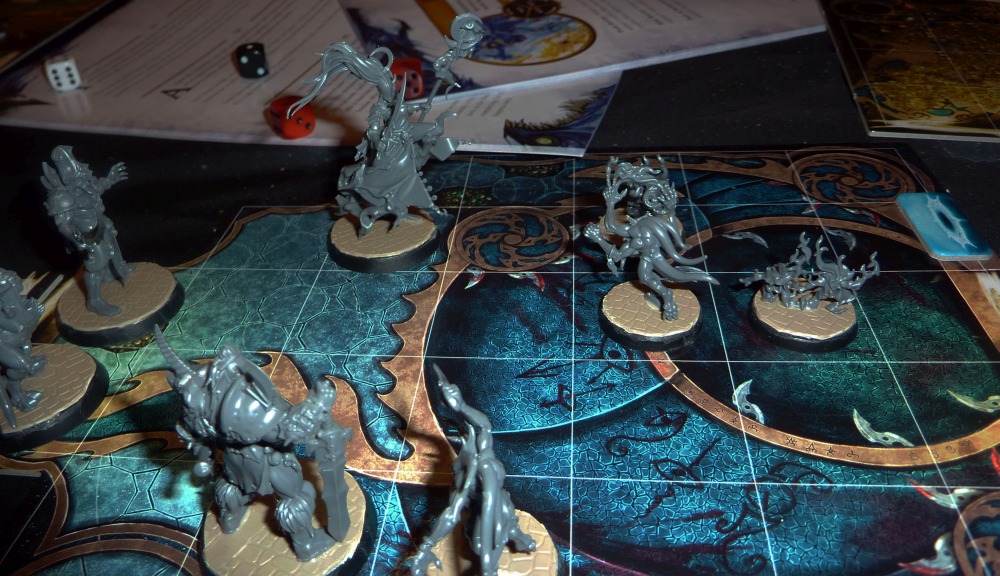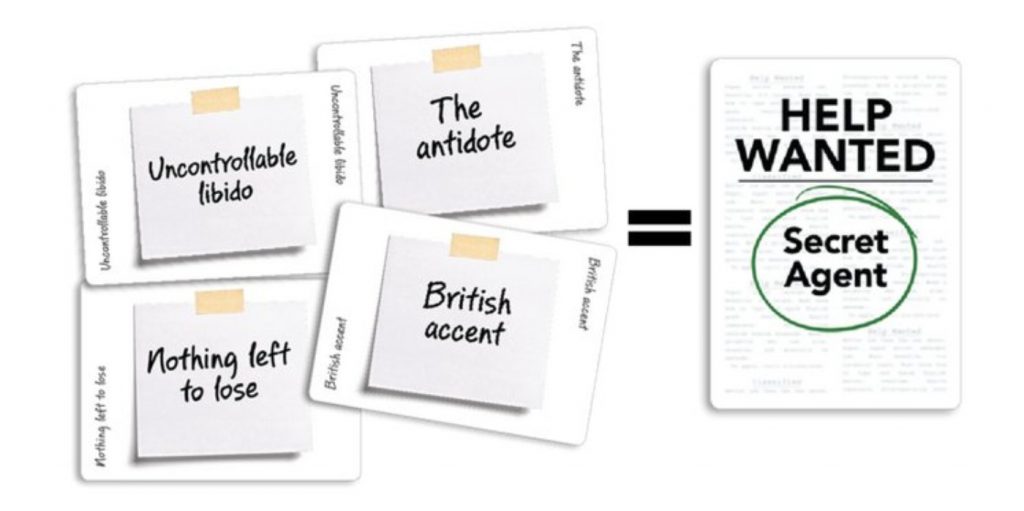[We’ve found another article Quinns never published! Honestly, that boy was so disorganised. This death thing is a much better arrangement.]
Quinns: Relic Runners knocks one thing absolutely out of the park. It feels like a board game.
The box shows characters falling over themselves in giddy adventure. Open said box and you’ll find it loaded with gorgeous components, from a three-dimensional board to dozens of shiny plastic relics. The game itself lasts an entirely reasonable 60 minutes, and fits as snugly around 2 players as it does 5. It’s all just quietly joyous.
It’s also not surprising. When I profiled Days of Wonder a few months back, I found a company proud of their policy of only releasing between zero and one new game each year. In other words, investing all of their energy in trying to create a second Ticket to Ride, or failing that, a second Small World. They want another game straightforward, accessible and cheerful enough to break into bookshops all over the world. Or maybe not even a game- a brand, something that’ll sell for years.
Which isn’t to say Relic Runners is a simple game. Thinking as much in a table of competitive players is liable to leave you very, very bruised.
Here’s how it works. Starting from the central camp and surrounded by vertical temples that are just nonsensically pleasing, players take turns to sprint down one path, and spend a ration pack to take the tile they’re stood on.
Half the time, this will see you burrowing through the three levels of a temple, which will grant you either points, a specific kind of point multiplier, or a one-shot power. But the other half will see you exploring grassy ruin tiles, and by taking one of these, you’re allowed to place one of your chunky plastic markers on one path connected to the ruin. That means your adventurer “knows” the trail, and can move along it for free in addition to their normal move.
Finally, when you’re out of ration packs, you have to end your turn in base camp, which refills your supplies. Then you’re off again! Out, out into the wilderness, vanishing down trails towards yet more cardboard riches, each tile you snatch off a stack heavy with possibility.
In other words, to pilfer the most from the jungle, you’ll need to use paths of your colour to cut increasingly circuitous journeys around the board, with the simple objective of avoiding that doomsday turn where you eiter don’t have a tile to grab, or the ration to grab it. All of which makes Relic Runners both tense and satisfying.
Got that? Think you could do a good job? I bet you do. But we’re not finished yet.
Heaping yet more tension and satisfaction onto the board are the Relic Runs themselves. When somebody siphons off the last tile from a temple, you replace it with a plastic relic of the same colour. And if somebody starts their turn on a relic and ends their move on a relic of the same colour, they collect that second relic for a ton of points. In other words, your network of paths needs to both get you home and link up temples.
Got that? Think you could still be the most Relicky Runner of them all? I bet you’re not so sure, are you. You’re starting to crack. But we’re still not finished!
Elevating Relic Runners into the territory of “Oh god, hang on guys, can I reset my adventurer and take my turn again,” is your personal player mat. Each time you travel down a river you can advance one of your toolboxes down a little path, and can later “spend” that toolbox, resetting its position, for the benefit of the space it’s on.
The toolbox squares might let you move your paths around. They might grant you extra ration packs. And if you wait, sweat running down your brow as you forgo these seductive options, you can get your toolboxes up onto spaces that’ll double your points for a turn, or just hand you a fat wad of points for something as simple as how many paths you have on the board.
And that’s the game! What could be simpler. Just run into the jungle and get relics. While denying other players when you can. While planning three turns ahead as to what relic runs you’re going to perform. While taking time to place paths that’ll ultimately get you home, let you run, and take you down rivers. While creating synergy with your toolboxes. Oh! I almost forgot. The longer your relic run is, the more points you score.
OK have fun!!
Wait. Where did your ration boxes go again? No. NO. You could have sworn you had one left! And so it is that your beautiful plan collapses like a tent in a storm of information, and you send your miserable explorer jogging home to make some more sandwiches.
In case I’m not making it clear, Relic Runners is the kind of vicious little puzzle that you can teach in five minutes, but still see in your dreams when you go to sleep, months later. In that sense, it succeeds wonderfully as a concept for a game, executed impeccably, with all that gorgeous art. It impressed me massively.
…I also cannot, for the life of me, recommend it. There’s just one problem. One malaria-ridden mosquito that buzzed around, ruining my otherwise lovely adventure
Relic Runners is a tremendously tricky game that’s built almost entirely from perfect information, meaning you know exactly what the consequences of your actions will be, allowing you to plan for your next turn. And the turn after that. And the turn after that. Which wouldn’t be a problem, but the game’s scoring mechanisms reward you for doing so, placing paths, crates and relics when it benefits you most.
In other words, Relic Runners is a both game where the more time you spend telescoping your turns outward in your head, the better you’ll do, but where no other player is invested in your actions when you eventually decide on them. These two factors come together in a tiny disaster- about half of the turns I took felt like compromises, brought on either by social pressure to not slow down the game, or by my own inability to calculate whether – for example – with an ability to move two paths, I could perform a colossal, game-winning Relic Run.
If you play with 4 or 5 people there’s more muddying the water as between your turns other players snag tiles, crates and relics you’d planned on using, but basically? Beneath its puzzle, Relic Runners made myself and my friends feel like hindrances to one another’s enjoyment.
In the final analysis, then, Relic Runners feels like a game where between two and five people sit around a beautiful board, but never quite interact with each other. A game where you’re always winning, but never entirely satisfied. A board game that does everything right, yet still feels intangibly wrong.
Still, that presentation is absolutely stellar. Days of Wonder can make as many mistakes as they like, as far as I’m concerned. I, for one, can’t wait to see them try again in 2015. Just imagine if they got it right.

